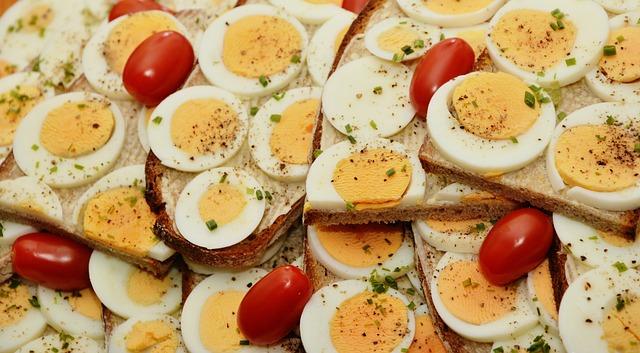In the quest for optimal health and effective weight management, the balance of macronutrients in our diet plays a pivotal role. Among these, protein has emerged as a critical component, renowned for its ability to enhance satiety and regulate appetite. As individuals increasingly seek sustainable dietary strategies, the high-protein, low-carbohydrate meal paradigm has gained prominence. This approach not only aligns with contemporary nutritional science but also addresses the growing demand for practical solutions to overeating and weight gain. By delving into the mechanisms through which protein influences satiety, this article aims to provide a comprehensive analysis of how incorporating high-protein, low-carb meals can transform eating habits, promote fullness, and ultimately contribute to long-term health benefits. Through an exploration of scientific evidence and practical applications, we will uncover how this dietary shift can empower individuals to make informed nutritional choices with confidence.
Understanding the Science Behind Protein and Satiety
Protein plays a crucial role in enhancing the feeling of fullness after meals, thanks to its complex digestion process and the impact it has on hunger hormones. When consumed, protein stimulates the release of hormones like peptide YY (PYY) and glucagon-like peptide-1 (GLP-1), both of which signal the brain to reduce appetite. This process not only delays gastric emptying but also provides a more prolonged energy release, making high-protein meals particularly effective for maintaining satiety. Research suggests that individuals who incorporate a higher proportion of protein into their diet often experience reduced cravings and lower overall calorie intake.
- Increased Thermic Effect: Digesting protein requires more energy compared to fats and carbohydrates, leading to a higher thermic effect and increased calorie burn.
- Muscle Preservation: Protein helps maintain lean muscle mass, which is essential for a healthy metabolism, especially when combined with a low-carb diet.
- Enhanced Satiety Hormones: The boost in satiety hormones leads to a natural decrease in hunger, making it easier to adhere to dietary goals.

Crafting Balanced Meals with High Protein and Low Carb Ingredients
When designing meals that maximize fullness while keeping carbohydrates in check, it’s crucial to focus on incorporating lean protein sources and fiber-rich vegetables. These ingredients not only provide the necessary nutrients but also help in regulating blood sugar levels, which can enhance satiety. Start by choosing proteins like:
- Grilled chicken breast
- Turkey or tofu
- Salmon or other fatty fish
- Eggs or egg whites
Pair these with non-starchy vegetables such as spinach, broccoli, or zucchini to create a satisfying base. Additionally, adding healthy fats like avocados or a sprinkle of nuts can further contribute to a sense of fullness without overloading on carbs. By carefully selecting and balancing these components, you can craft meals that not only support your dietary goals but also keep hunger at bay effectively.

Practical Tips for Incorporating Protein-Rich Foods into Your Diet
Integrating protein-rich foods into your meals is an effective way to enhance satiety while maintaining a low carbohydrate intake. Start by prioritizing lean meats such as chicken breast, turkey, and fish, which offer a substantial protein boost without excess fat. For those who prefer plant-based options, tofu, tempeh, and legumes like lentils and chickpeas can serve as excellent protein sources. Additionally, incorporating eggs into your breakfast routine or as a quick snack can help keep hunger at bay throughout the day.
Experiment with dairy products such as Greek yogurt or cottage cheese, which provide not only protein but also probiotics for gut health. Nuts and seeds, including almonds, chia seeds, and pumpkin seeds, are versatile additions to salads or yogurt bowls, offering both protein and healthy fats. For a more convenient approach, consider stocking up on protein powders or bars, which can be seamlessly integrated into smoothies or consumed on-the-go. Remember to balance your meals with plenty of vegetables to ensure you’re getting enough fiber and essential nutrients, supporting overall health and wellness.

Overcoming Common Challenges in Maintaining a High Protein, Low Carb Lifestyle
Transitioning to a high protein, low carb lifestyle can be daunting due to common challenges like feeling unsatisfied or lacking variety in meals. To enhance satiety and keep cravings at bay, consider incorporating these strategies into your meal planning:
- Balance Your Plate: Aim to include a variety of protein sources such as chicken, fish, tofu, or legumes. Complement these with healthy fats like avocado or nuts, which can prolong the feeling of fullness.
- Embrace Vegetables: Fill your plate with fiber-rich, low-carb vegetables like spinach, broccoli, and zucchini. These not only add volume to your meals but also contribute essential nutrients and fiber, crucial for maintaining satiety.
- Snack Smart: Opt for protein-rich snacks such as Greek yogurt, cheese, or a handful of almonds. These can help bridge the gap between meals, keeping hunger at bay without derailing your carb goals.
By strategically combining proteins with healthy fats and fibrous vegetables, you can overcome the hurdles of a high protein, low carb lifestyle, ensuring that each meal is both satisfying and nutritious.
